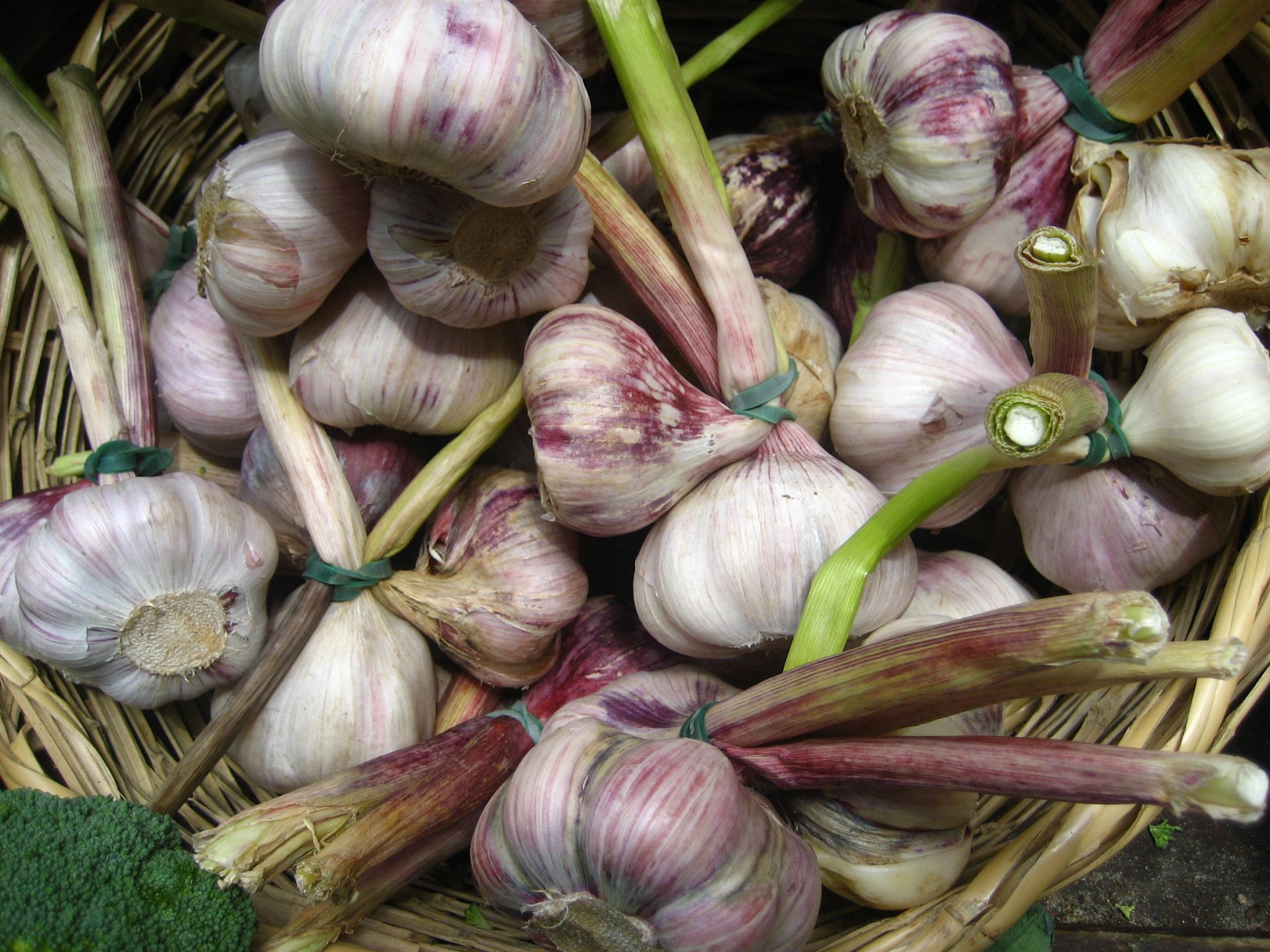What has always been called 'strok' in Resia by the local community (in standard Slovenian, the same word indicates 'clove') is a particularly prized variety of garlic, included in the national list of traditional agricultural food products (Decree of 8 May 2001, Ministry of Agricultural and Agri-food Policies) and a Slow Food item since 2004.
Characterised by a particularly sweet aroma, Resia garlic consists of bulbs of 6-8 cloves each with a reddish tunic, and has no central cloves. According to scholars, the preservation of this variety was made possible by a concurrence of factors; from the geographic, cultural and linguistic isolation of the valley to the mountainous terrain and the cultivation method itself.
Resians have been cultivating strok for as long as they can remember, and it was once used in many ways. According to popular memory, in addition to self-consumption, the Resians also marketed it in Slovenia, Austria and Hungary. Moreover, strok was administered to those suffering from intestinal worms and it was generally hung around children’s necks in the form of a necklace to protect them said worms, or more in general, as an amulet.
In recent decades, Resia Garlic has been the subject of numerous studies by the Faculty of Agriculture at the University of Udine, and since 2007, the Municipality of Resia and the Julian Pre-Alps National Park have initiated a project aimed at its enhancement.
The garlic cultivated in Resia today is the same one handed down and reproduced agamically in the area of the municipality of Resia and can be marketed in the traditional braids, in bunches or loose. The main characteristics of Resia Garlic are its long shelf life, high digestibility and simultaneously intense and delicate aroma.
In Resia, strok was harvested between the end of July and the first ten days of August and then, using the stem of the bulbs themselves, was woven into braids ('kïte' in Resian), which were then hung outside the houses and consumed as needed. Even today, strok is still cultivated according to traditional techniques: a part of the bulbs, harvested in July, is removed each year from consumption and sale to be used in November for reseeding and perpetuation of the variety.
Although steadily increasing, strok production remains largely family-based, creating an important extra income for local families.
To find out where you can buy Resia Garlic (Aglio di Resia / Rozajanski Strok), see the section 'Aziende Agricole, Allevatori e Produttori d’Aglio' at: www.ecomuseovalresia.it/ricettivita/

